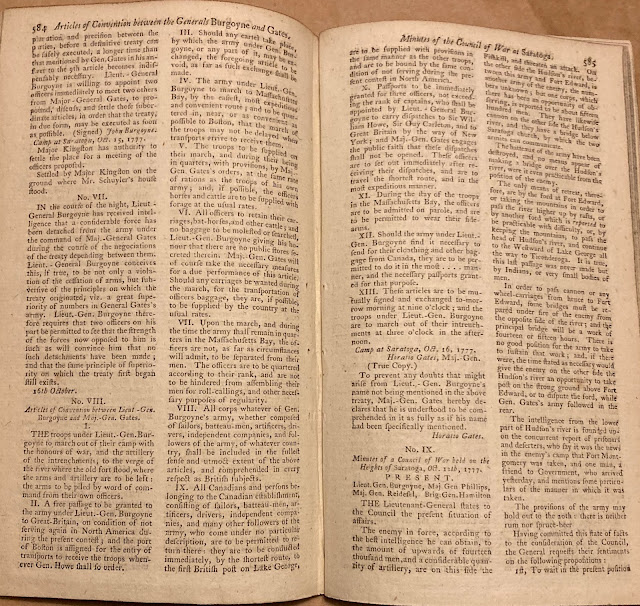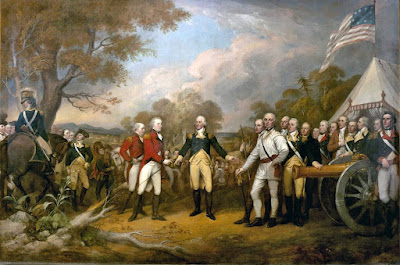Surrender At Saratoga - "The Greatest Conquest Ever Known"

For some time I assumed Lieutenant-General John Burgoyne's Saratoga Campaign came to an end in mid-October of 1777, when his army had advanced south as far as it was able, only to be stopped in its tracks and forced to surrender. When I started exploring the route of the Convention Army, I assumed that the Surrender Site would be where British and German troops had laid down their arms. Now, after some additional research, and a weekend visit to Saratoga National Historical Park , I've learned those assumptions were wrong - and another visit to Schuylerville is in order, as there is more to see there than I'd realized. The story of Burgoyne's surrender at Saratoga is linked to a a number of locations. One would be what is now called "Victory Woods" , a misleading name from the British perspective perhaps, that reflects its location in the present-day Village of Victory , incorporated in 1849, rather than any description of the site in 1777...



